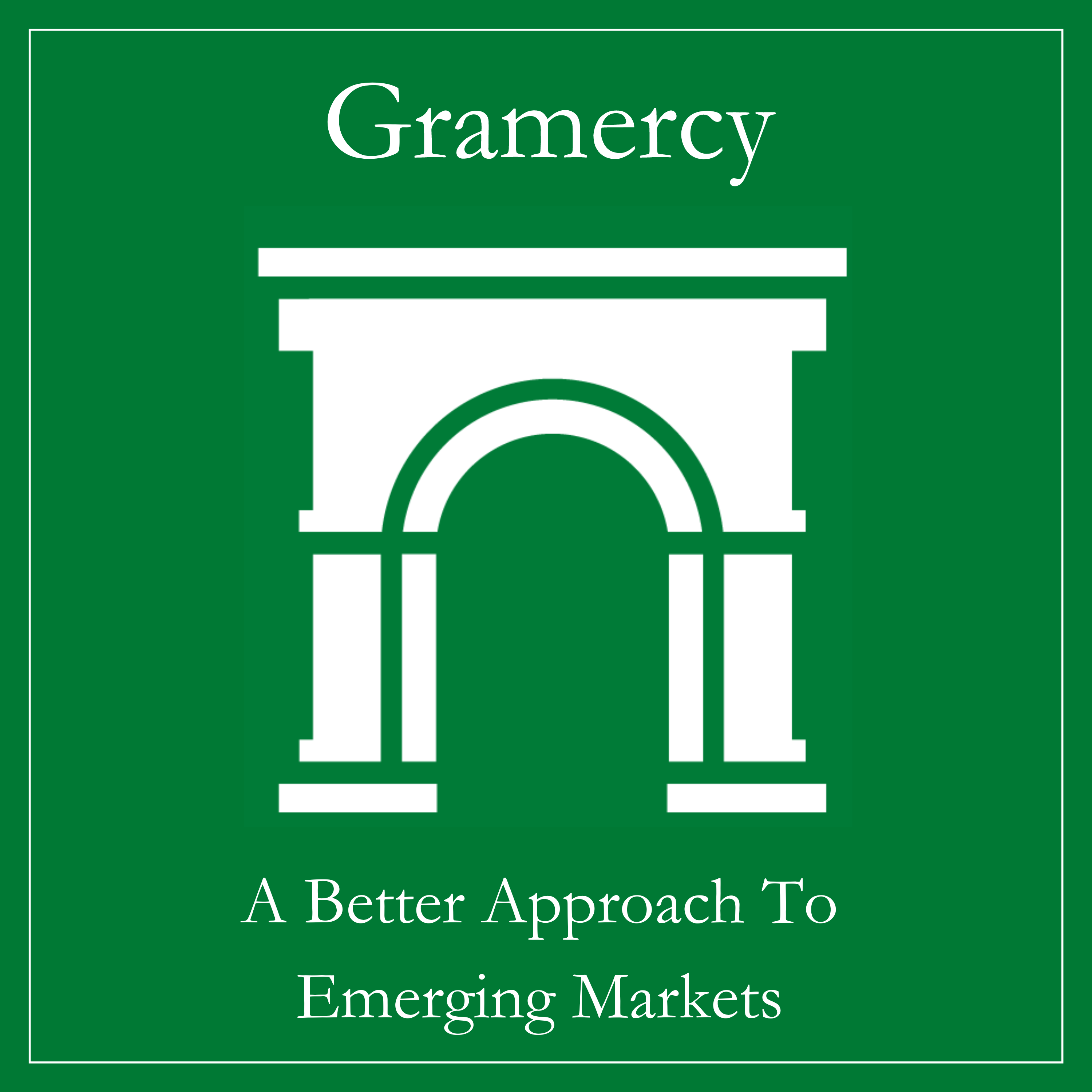Contents
Market Overview
Macro Review
Markets shift to price-in Trump 2.0. Weekend events improved the former President’s betting odds, just as the market sought to better understand the foreign policy views of JD Vance. The digestion of dovish Fedspeak from Chair Powell, Governor Waller and Governor Williams helped re-price U.S. Treasuries lower with a strong signal for a September interest rate cut as well. Former President Trump highlighted that he would allow Jerome Powell to serve out his term as Fed Chair until 2026 and that he believed tariffs are a great economical tool, however the dispersion in equities was a visible trend. The Nasdaq was down -3.4% and the Magnificent 7 was down -3.5%, but the Russell 2000 was up +3.4%. Meanwhile, Bitcoin was up +6% and gold initially rallied over +2% before selling off on Thursday with other commodities (copper -4.1% this week). Needless to say, the Atlanta Fed’s GDPNow estimate now sees growth coming in at an annualized rate of +2.7%, when it was as low as +1.5% at the beginning of July. China’s weaker-than-expected June retail sales, weaker 2Q GDP at 4.7% and Trump’s favourable polling saw Chinese TMT trade down -6.6% over the week. The added complication saw former House Speaker and Senate Majority Leader apply pressure on President Biden to step-down, just as he contracted Covid-19. Finally, the IMF World Economic Outlook highlighted that global growth was raised to 3.3% in 2025 from 3.2% but kept constant for 2024. Spain and China saw 0.4ppt increases in the 2024 forecast to 2.4% and 5.0%, respectively, just as India’s 2024 growth was increased 0.2ppts to 7.0% but South Africa was cut by 0.2ppts to 0.7%.
EM Credit Update
Emerging market sovereign credit (cash bonds) ended the week down -0.2% with credit spreads 4bps wider. Sovereign outperformers were Ethiopia, El Salvador and Ghana, while Argentina, Ukraine and Gabon underperformed. Ukraine’s SteerCo had engaged in a second-round of creditor talks as the deadline to restructure sovereign debt swiftly approaches.
The Week Ahead
The Fed’s preferred price gauge will be an important feature of week with the core PCE deflator. The second feature will be U.S. 2Q GDP. Focus will also be on the Bank of Canada ahead of a pivotal interest rate decision (4.75%) having already begun easing policy rates in June (25bps). As such, they became the fourth G10 central bank to cut rates after Switzerland in April, Sweden in May and the ECB in June, but the question is now around whether G10 central banks pause and reassess data. Key EM interest rate decisions are due from Hungary (7.0%), Nigeria (26.25%), Turkey (50.0%), Russia (16.0%) and Ukraine (13.0%). Inflation releases are then due out of South Africa, which is important after holding rates at 8.25%, but the vote of 4-2 increased the probability of a cut in 2H. Economic activity out of Brazil will offer an interesting gauge in assessing the impact of widespread floods and the impact on the economy. Finally, at the end of the week we will see the Olympics Opening Ceremony.
Highlights from emerging markets discussed below: No surprises out of China’s Third Plenum while data remains mixed, Pakistan reaches IMF staff-level agreement on a new Extended Funded Facility (EFF) program, and Ecuador secures $3bn in fresh multilateral financing.
Fixed Income

Equities
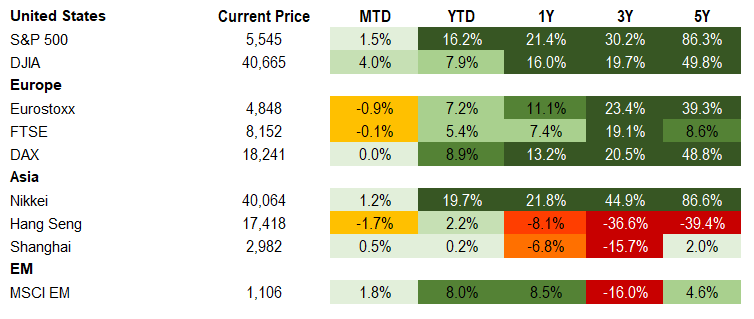
Commodities

Source for data tables: Bloomberg, JPMorgan, Gramercy. EM Fixed Income is represented by the following JPMorgan Indicies: EMBI Global, GBI-EM Global Diversified, CEMBI Broad Diversified and CEMBI Broad High Yield. DM Fixed Income is represented by the JPMorgan JULI Total Return Index and Domestic High Yield Index. Fixed Income, Equity and Commodity data is as of July 19, 2024 (early-morning).
Emerging Markets Weekly Highlights
No surprises out of China’s Third Plenum while data remains mixed
Event: The Third Plenum focused on high quality growth and development including technology and new growth drivers emphasizing the green economy, enhancement of well-being through improvements in income distribution, fiscal and tax reform, reducing property and financial sector risks and economic opening related to FDI with no major deviations from previous policy discussions in recent years. Further details are due to be released. Meanwhile, 2Q real GDP was softer than expected at 4.7%, coupled with lower than consensus June retail sales and credit data, but solid industrial production.
Gramercy Commentary: The Plenum was generally in line with expectations and previous guidance on structural policy. We continue to see room for moderate policy adjustments, potentially at the upcoming Politburo meeting or later this year, to manage growth dynamics as necessary. While the miss on 2Q GDP prompted some sell-side houses to slightly adjust down their 2024 growth forecasts, we expect consensus growth to remain in a range of 4.75-5% assuming no policy surprises.
Pakistan reaches IMF staff-level agreement on a new Extended Funded Facility (EFF) program
Event: The Government and IMF struck a staff-level deal on a 37-month $7bn EFF in an aim to cement macroeconomic stability. The program will entail fiscal and monetary reform as well as improvements to SOE management. Financing assurance from bilateral partners is required for board approval.
Gramercy Commentary: The fresh multilateral funding, once approved by the Board, is constructive and provides Pakistan with an additional policy anchor and balance of payments backstop. The swift negotiations with the Fund reflect the recent success under the Stand-By Arrangement (SBA) completed in April as well as Finance Minister Aurangzeb’s acumen. The market will await clarity on financing assurance and board approval. Thereafter, execution will be key in the context of latent social and political risks despite recent stability in the aftermath of the election earlier this year as well as Pakistan’s on-and-off-again track record with respect to IMF programs.
Ecuador secures $3bn in fresh multilateral financing
Event: Ecuador’s Ministry of Finance announced this week that it expects $3bn of new loan commitments by multilateral organizations, comprising $2bn from the Inter-American Development Bank (IDB) and half a billion each from the Latin America Reserve Fund (FLAR) and the IMF.
Gramercy Commentary: The fresh multilateral financing announced by the authorities comes on top of funds already disbursed by the IMF this year under Ecuador’s 48-month $4bn EFF that was approved in May. The Government’s enhanced access to cheap multilateral financing is supported by Ecuador’s excellent relationship with, and accumulated goodwill from, the IMF and its partner organizations that began under former President Lenin Moreno and has extended further during the subsequent Lasso and Noboa Administrations. Multilateral support is a key credit anchor for the sovereign and should continue to alleviate investor concerns about fiscal sustainability in the context of tighter global financing conditions and lack of market access. Further normalization in Ecuador’s credit story that could reopen market access is conditional on the continued political ability to meet fiscal adjustment conditionality under the IMF program. Equally important would be a market-friendly outcome in the forthcoming Presidential Elections in February 2025, in which President Noboa will be looking to secure re-election and a stronger mandate for reforms.
Emerging Markets Technicals
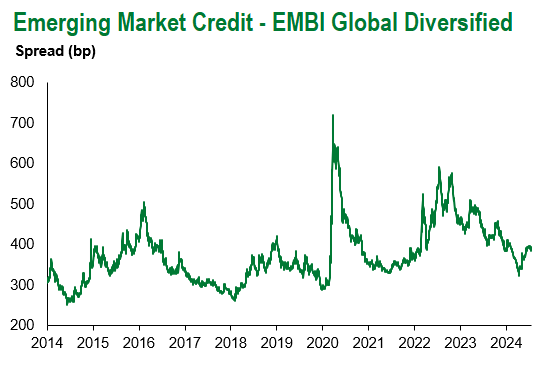

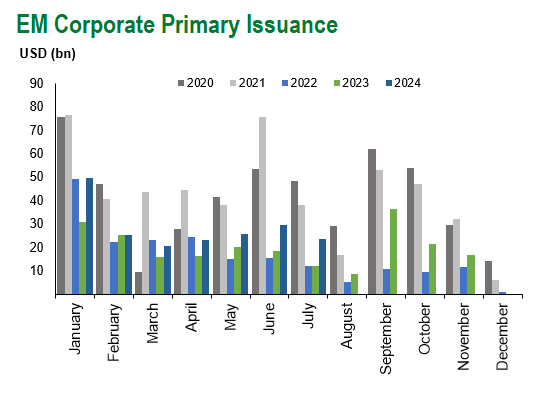
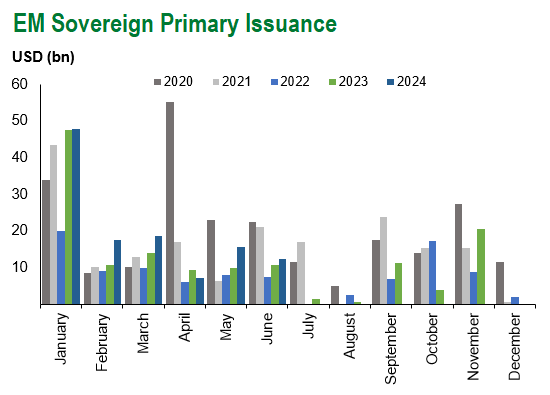

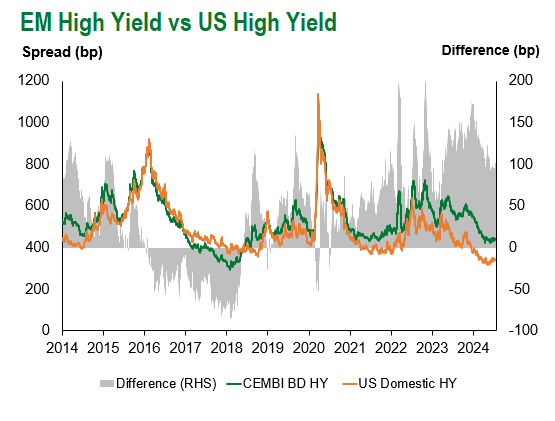
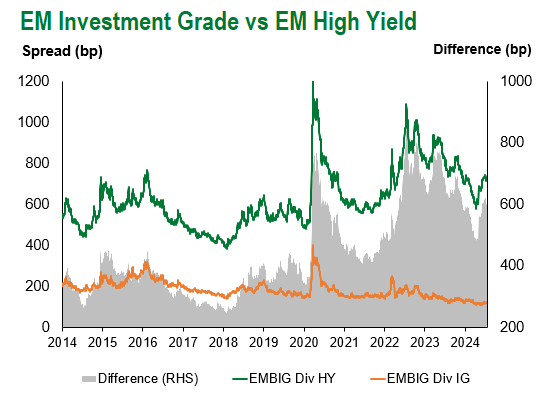
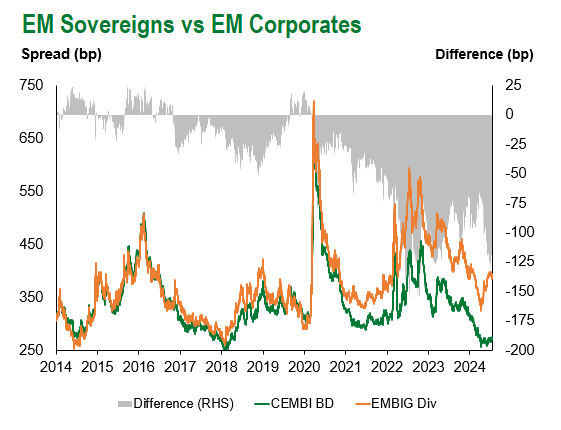
Emerging Markets Flows
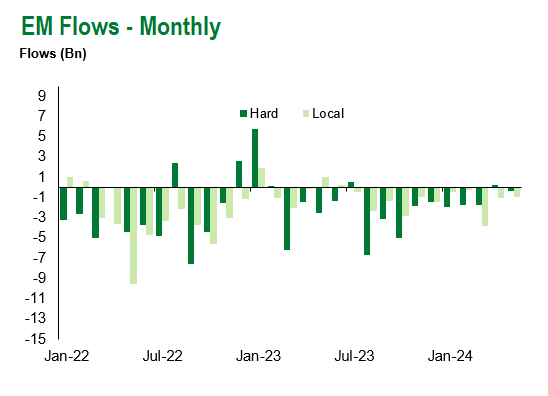

Source for graphs: Bloomberg, JPMorgan, Gramercy. As of July 19, 2024.
For questions, please contact:
Kathryn Exum, CFA ESG, Director, Co-Head of Sovereign Research, [email protected]
Petar Atanasov, Director, Co-Head of Sovereign Research, [email protected]
James Barry, Director, Deputy Portfolio Manager, [email protected]
This document is for informational purposes only. The information presented is not intended to be relied upon as a forecast, research or investment advice, and is not a recommendation, offer or solicitation to buy or sell any securities or to adopt any investment strategy. Gramercy may have current investment positions in the securities or sovereigns mentioned above. The information and opinions contained in this paper are as of the date of initial publication, derived from proprietary and nonproprietary sources deemed by Gramercy to be reliable, are not necessarily all-inclusive and are not guaranteed as to accuracy. This paper may contain “forward-looking” information that is not purely historical in nature. Such information may include, among other things, projections and forecasts. There is no guarantee that any forecasts made will come to pass. Reliance upon information in this paper is at the sole discretion of the reader. You should not rely on this presentation as the basis upon which to make an investment decision. Investment involves risk. There can be no assurance that investment objectives will be achieved. Investors must be prepared to bear the risk of a total loss of their investment. These risks are often heightened for investments in emerging/developing markets or smaller capital markets. International investing involves risks, including risks related to foreign currency, limited liquidity, less government regulation, and the possibility of substantial volatility due to adverse political, economic or other developments. References to any indices are for informational and general comparative purposes only. The performance data of various indices mentioned in this update are updated and released on a periodic basis before finalization. The performance data of various indices presented herein was current as of the date of the presentation. Please refer to data returns of the separate indices if you desire additional or updated information. Indices are unmanaged, and their performance results do not reflect the impact of fees, expenses, or taxes that may be incurred through an investment with Gramercy. Returns for indices assume dividend reinvestment. An investment cannot be made directly in an index. Accordingly, comparing results shown to those of such indices may be of limited use. The information provided herein is neither tax nor legal advice. Investors should speak to their tax professional for specific information regarding their tax situation.
